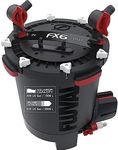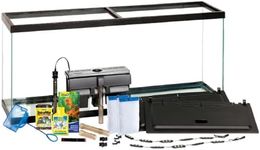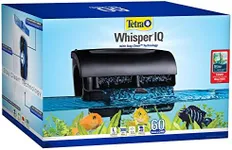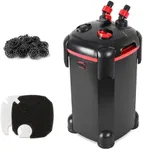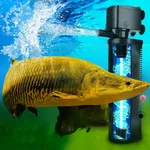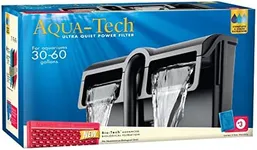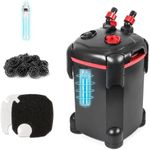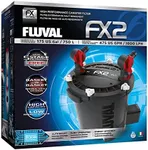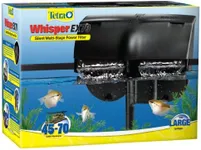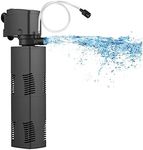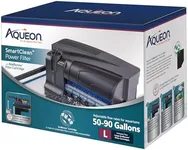Buying Guide for the Best 55 Gal Fish Tank Filter
Choosing the right filter for your 55-gallon fish tank is crucial for maintaining a healthy environment for your aquatic pets. A good filter will keep the water clean, remove harmful toxins, and ensure proper oxygenation. When selecting a filter, consider the type of fish you have, the tank's bioload, and your maintenance preferences. Here are some key specifications to help you make an informed decision.Filter TypeThe filter type determines how the water is cleaned. Common types include hang-on-back (HOB), canister, sponge, and internal filters. HOB filters are easy to install and maintain, making them great for beginners. Canister filters offer superior filtration and are ideal for heavily stocked tanks. Sponge filters are gentle and suitable for tanks with small or delicate fish. Internal filters are compact and good for smaller setups. Choose a filter type based on your tank's needs and your comfort with maintenance.
Flow RateFlow rate, measured in gallons per hour (GPH), indicates how much water the filter can process. A higher flow rate means more water is filtered, which is essential for larger tanks. For a 55-gallon tank, aim for a filter with a flow rate of at least 220 GPH (4 times the tank volume). If you have a heavily stocked tank or messy fish, consider a higher flow rate. Ensure the flow rate is appropriate for your fish species, as some fish prefer gentle currents while others thrive in stronger flows.
Filtration StagesFiltration stages refer to the different processes the filter uses to clean the water. There are three main types: mechanical, biological, and chemical. Mechanical filtration removes debris, biological filtration breaks down harmful ammonia and nitrites, and chemical filtration removes toxins and odors. A good filter should offer all three stages for comprehensive water purification. Consider your tank's bioload and the specific needs of your fish when evaluating the filtration stages.
MaintenanceMaintenance involves cleaning and replacing filter media. Some filters are easier to maintain than others. HOB and sponge filters are generally simple to clean, while canister filters may require more effort. Consider how much time and effort you are willing to invest in maintenance. Regular maintenance is crucial for keeping the filter effective and ensuring a healthy tank environment.
Noise LevelNoise level is an important consideration, especially if your tank is in a living area or bedroom. Some filters operate quietly, while others can be quite loud. Read reviews and product descriptions to gauge the noise level. If noise is a concern, look for filters specifically designed to operate quietly. Your comfort and the well-being of your fish can be affected by the noise level, so choose accordingly.
Size and CompatibilityThe size of the filter should be compatible with your tank setup. Ensure the filter fits comfortably in or on your tank without obstructing other equipment or decorations. Compatibility with your tank's dimensions and design is crucial for optimal performance. Measure your tank and check the filter's dimensions before purchasing. A well-fitting filter will be more efficient and easier to maintain.
